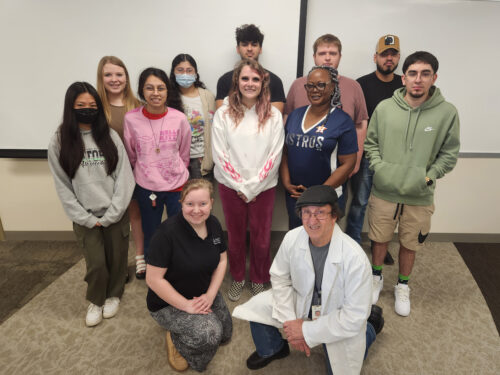Jessica Hernandez challenges the norms of traditional Western scholarship in her work as an environmental scientist, author, and activist. Hernandez, who is Maya Ch’orti and Binnizá-Zapotec, brings her lived experience as an Indigenous scholar into her research, building a bridge between activism and academia.
Like many notable women of color in STEM, Hernandez’s work was missing on Wikipedia – until just two months ago, when four undergraduates living across the country from Hernandez came together to add her story.
“Jessica Hernandez is an Indigenous scientist who gets very little exposure and advocates for communities and groups that are also underrepresented,” said Dayanara Mendez, a first-year English student at Lone Star College-Kingwood, a community college in Houston, Texas. “To get the chance to write an article about a woman of color in STEM, especially since I’m Hispanic and I always love the chance to learn more about other Latinos, made this a great opportunity.”
Classmates Natalie Ramirez, Alexandria Ravina, and McKenna Sealy joined Mendez to create the new Wikipedia article for Hernandez, working collaboratively to outline sections, find high quality sources for citations, and review each other’s research and writing. For Sealy, the Wikipedia assignment was a chance to share an inspiring and important perspective.

“Jessica Hernandez has a lot to offer our world from her Indigenous perspective and research as an environmental scientist, activist, author, and researcher,” said Sealy. “She’s learned a lot through her family heritage about the environment, and that, combined with her formal education, can be very powerful in helping us to better understand the world around us and how to take care of it.”
Sealy noted the power of Wikipedia in shaping awareness and understanding of notable figures like Hernandez, emphasizing its accessibility.
“Because of Wikipedia, no one needs a database that costs money to learn more about people making a great impact on the world,” Sealy explained. “The assignment helped me realize that we can all contribute to big and important things even if we feel small and don’t think we can have an impact.”
At first, Mendez dreaded the research for the project, but once she began, quickly changed her mind.
“When I actually started, I found that it was pretty fun,” Mendez shared. “It was kind of challenging and I’m grateful for it because it was something new. It helped kill the boredom that I normally get from writing the same kind of essay consistently.”
While she was a little nervous for the Wikipedia page to go live for the world’s eyes, Mendez received positive feedback from friends and would look forward to another Wikipedia assignment in the future.
Sealy agreed, noting the feeling of accomplishment when they finalized and published the article.
“This was a great assignment compared to a traditional assignment because rather than turning in a paper no one will ever see again, I’m actually making a difference and my work will be seen,” said Sealy.
Guided by course instructor Dr. Brian Shmaefsky, the group’s Wikipedia assignment is part of a larger Wiki Education initiative sponsored by the Broadcom Foundation, which encourages the creation of new biographies of diverse people in STEM on Wikipedia.
Interested in incorporating a Wikipedia assignment into your course? Visit teach.wikiedu.org to learn more about the free assignment templates and resources that Wiki Education offers to instructors in the United States and Canada.
Explore other related stories:
- Adding Claibourne Smith’s Wikipedia article: “like it was a piece of art that I kept looking at”
- Telling the story of an African American chemist
- Clovis students add biographies of diverse people in STEM
